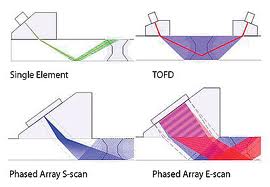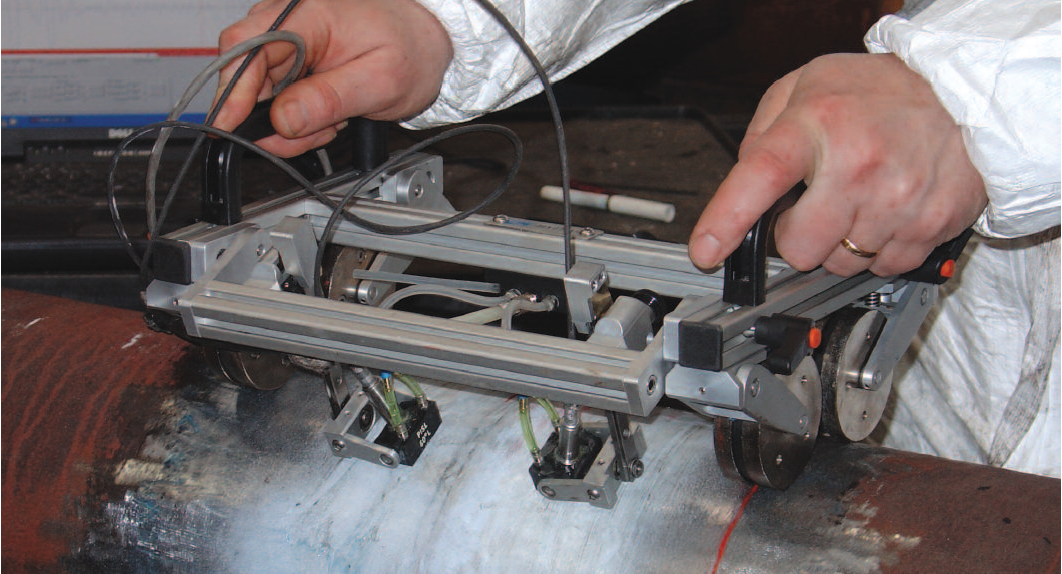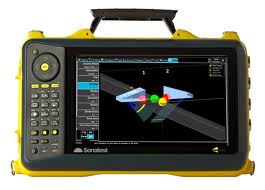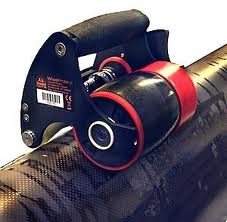(Advance Testing)
Time of Flight Diffraction (TOFD)
Most ultrasonic techniques rely on receiving specular reflections from defects, even if only from particular facets. Time of flight diffraction (TOFD) detects flaws using the signals diffracted from the flaw’s extremities. Two angled compression wave probes are used in transmit-receive mode, one each side of the weld. The beam divergence is such that the majority of the thickness is inspected, although, for thicker components, more than one probe separation may be required. When the sound strikes the tip of a crack, this acts as a secondary emitter which scatters sound out in all directions, some in the direction of the receiving probe. A ‘lateral wave’ travelling at the same velocity as the compression waves, travels directly from the transmitter to the receiver. The time difference between the lateral wave and the diffracted signal from the flaw provides a measure of its distance from the scanned surface. If the flaw is large enough in the through wall dimension, it may be possible to resolve the tip diffracted signals from its top and bottom, thereby allowing the through wall height of the flaw to be measured.
Due to the low amplitude of the diffracted signals, TOFD is usually carried out using a preamplifier and hardware designed to improve signal-to-noise performance. As the probes are scanned along the weld, the RF A-Scan signals are digitised and displayed in the form of a grey-scale image showing flaws as alternating white and black fringes.
Depending on which direction the probes are moved over the component surface, it is possible to construct ‘end-view’; (B-scan TOFD) or ‘side-view’ (D-scan TOFD) cross-sectional slices. TOFD can also utilise Synthetic Aperture focusing or beam modelling software to minimise the effects of beam divergence, thereby providing more accurate location and sizing information.
TOFD is generally recognised as the most accurate ultrasonic technique for measuring the through-wall height of planar flaws that lie perpendicular to the surface and as a method for detecting and quantifying crevice corrosion at the weld root. At present, national standards for the application of TOFD exist, however, no acceptance criteria have been agreed upon.

What will it find
The TOFD technique is suited for the detection and sizing of all types of embedded flaws, especially those planar in nature. However, the detection of small near the scan surface flaws can be more difficult due to the presence of the lateral wave response which often occupies several millimetres of the depth axis on images.
Email Us
harminder@iteglobal.asia
Address
2 Tessensohn Road, #04-07
Singapore 217646
Call us
+65 6980 8696



